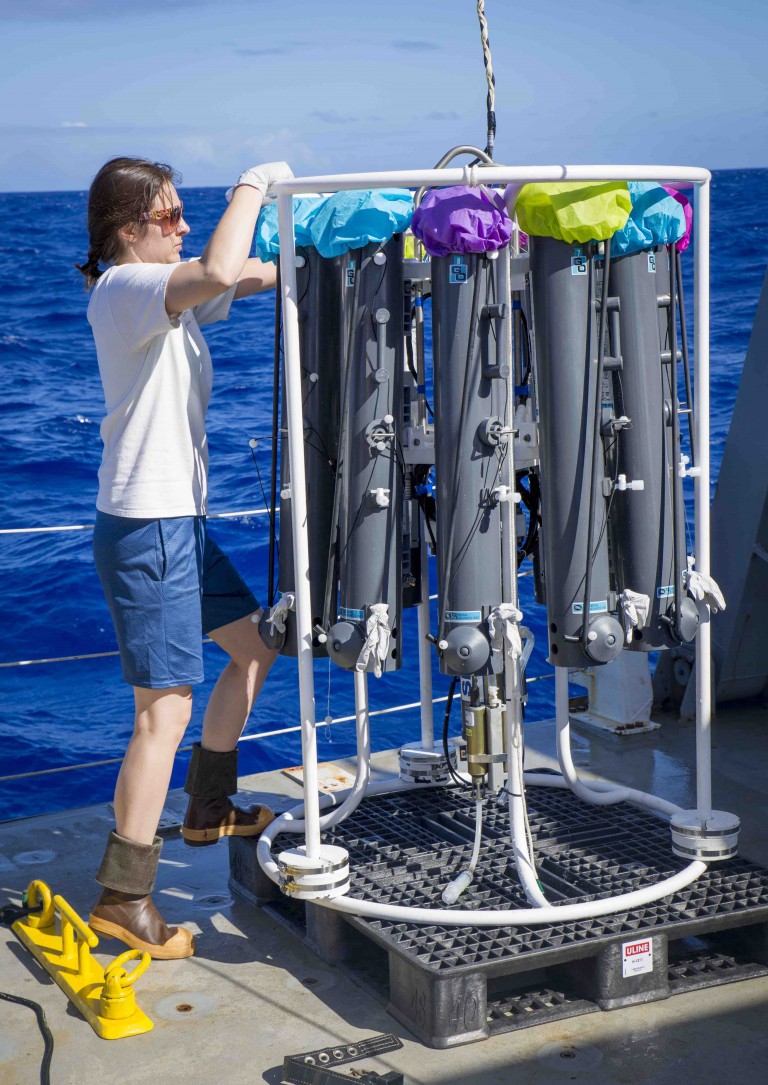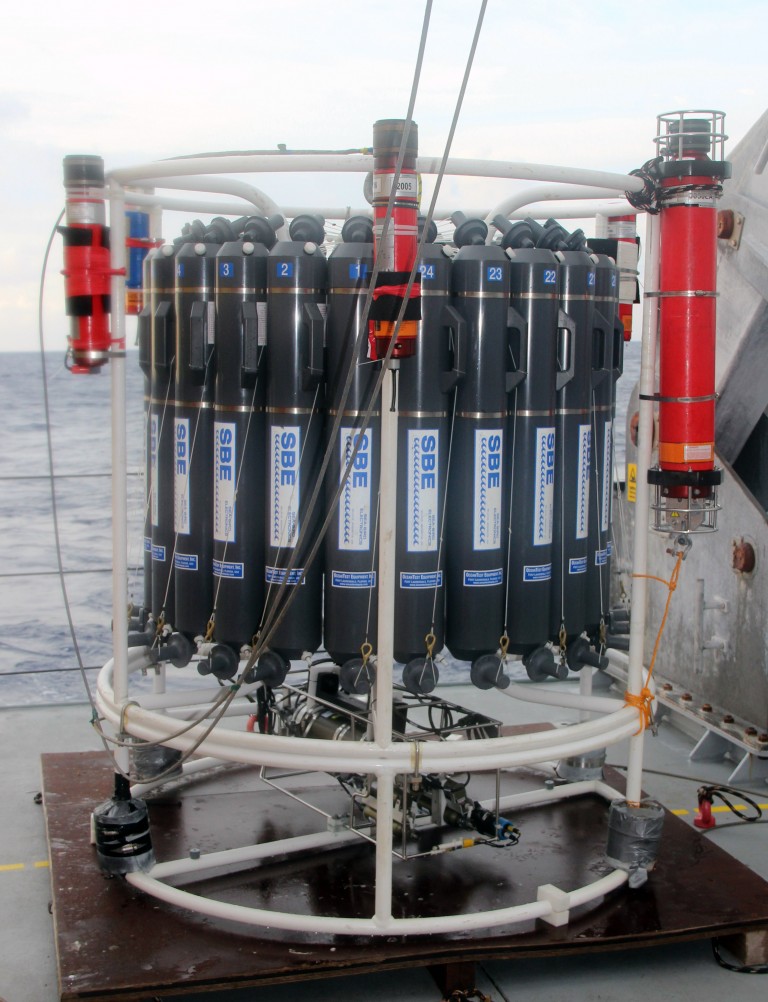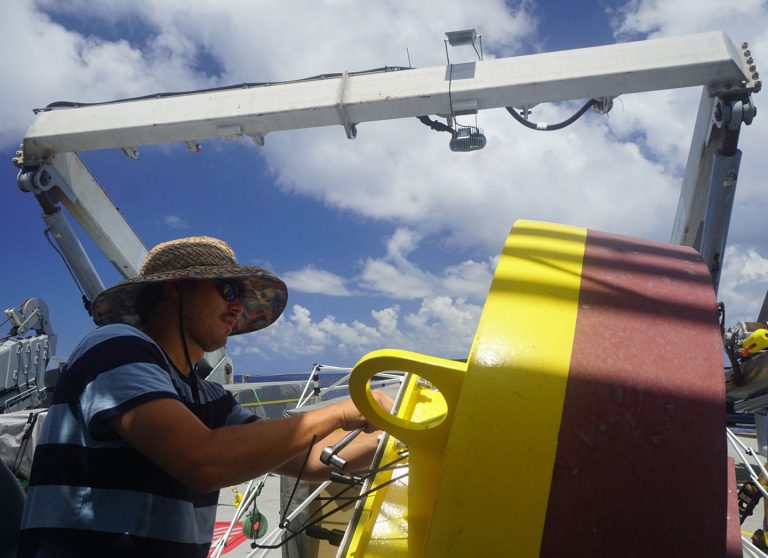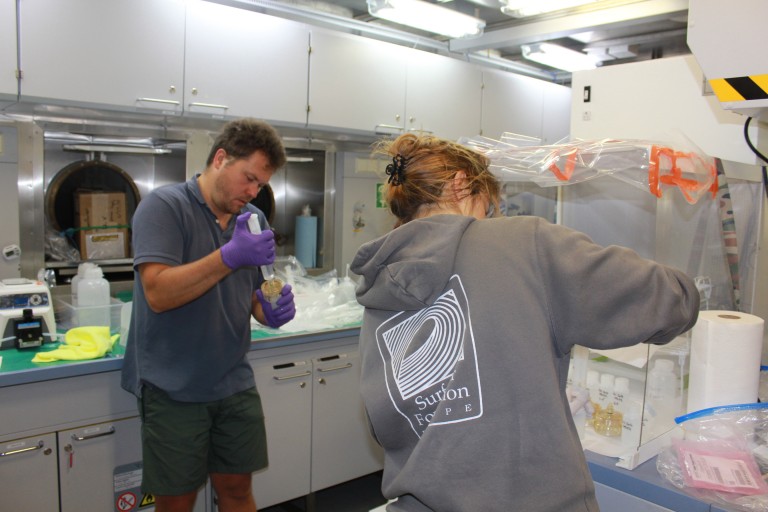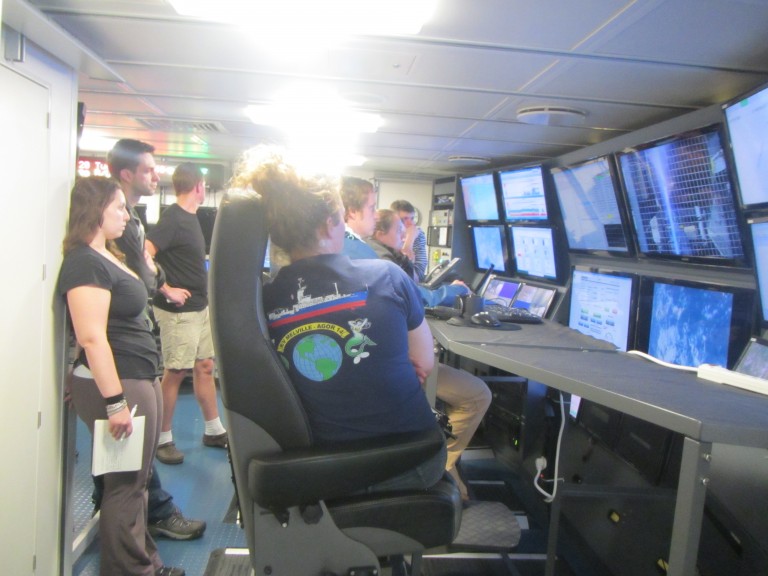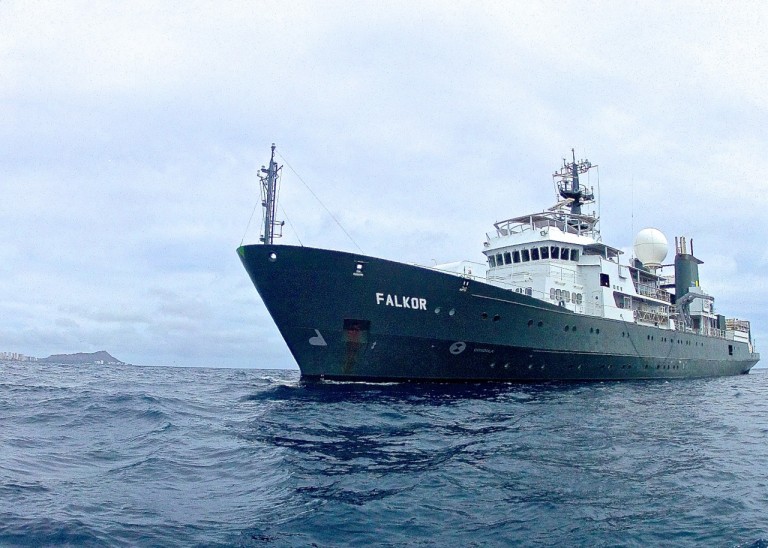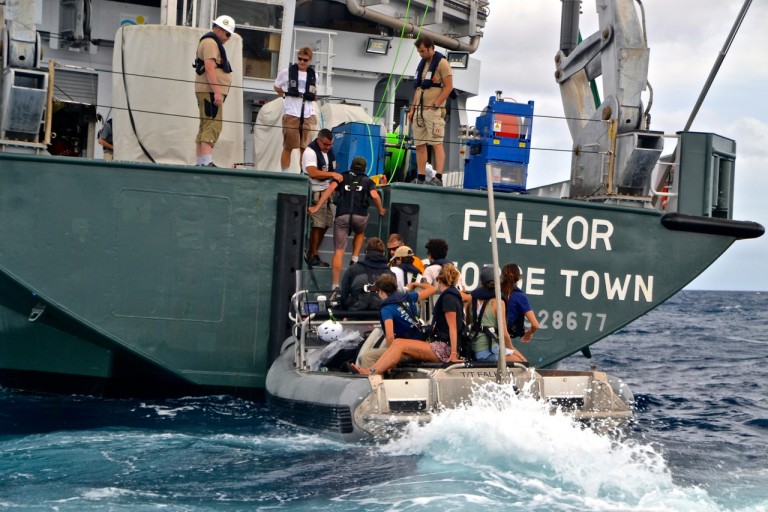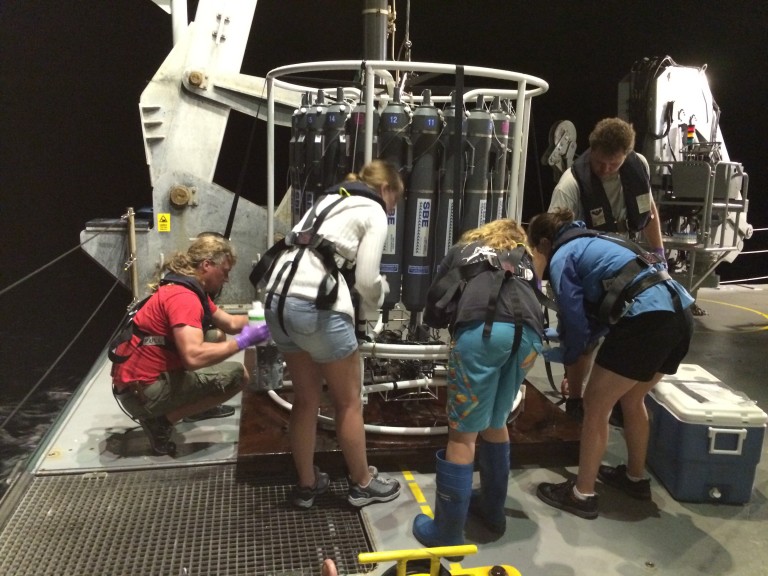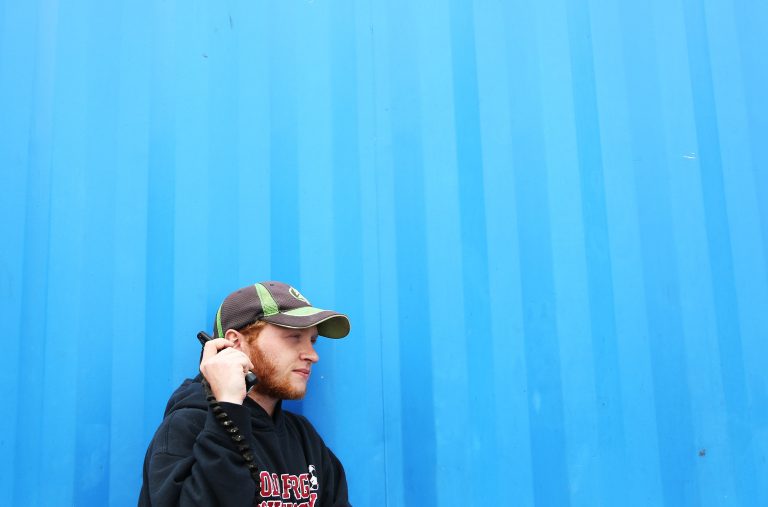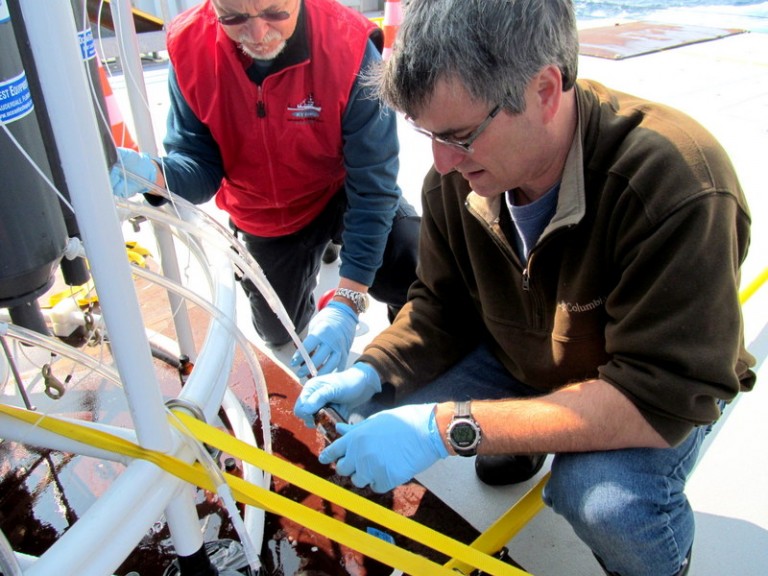Log Post: Pumping Iron
Do shallow arc volcanoes supply iron to phytoplankton in the open ocean? Scientific research on a moving ship is a real challenge. We have to perform precise sampling and chemical analyses, all while adapting to a rolling ship. On this expedition, we are using two separate and specialized CTD (Conductivity, Temperature, Depth) systems – one … Continued
